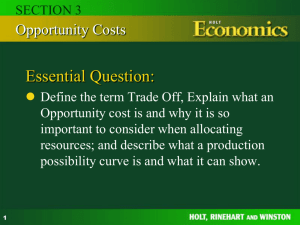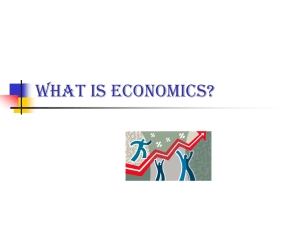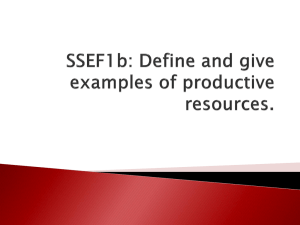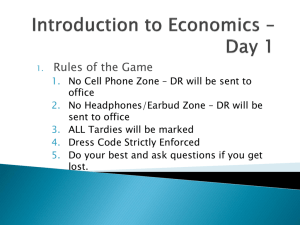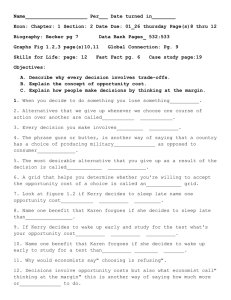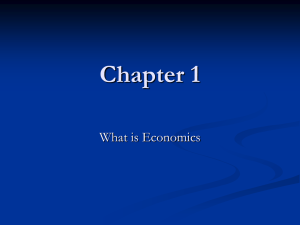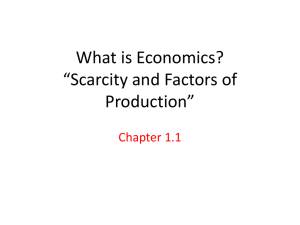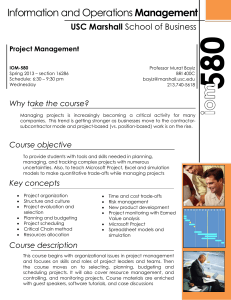Ch1Sec2
advertisement
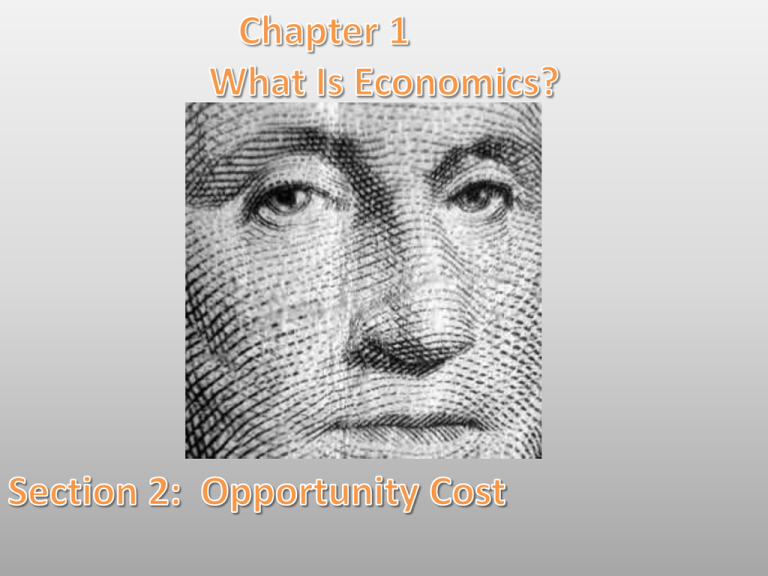
Lesson Objectives: By the end of this lesson you will be able to: *Explain why every decision involves trade-offs. *Summarize the concept of opportunity cost. * Describe how people make decisions by thinking at the margin. Economics and You- Decisions you make involve a trade-off Cleaning your room/Party Example Principles in Action- Every time we choose to do something, we give up the opportunity to do something else. You will learn that scarcity and choice can affect the ways you spend your time and what services your community provides. Trade-Offs Individuals, businesses, large groups of people, and the government all make decisions that involve trade-offs. A trade-off is the act of giving up one benefit in order to gain another, greater benefit. Trade-offs usually deal with measurable things like money, property, or time. Trade-offs may also include things that are not easy to measure such as enjoyment, job satisfaction, or the feeling of well-being. Individuals and Trade-Offs At every stage of life, you have to make trade-offs. Adolescence *Taking part in the school play prevents you from playing an after school sport. Young Adult *You turn down an exciting low paying job, for a less interesting high paying job. Middle Age *Give up a vacation in order to put more money away for your retirement. Businesses and Trade-Offs The decisions that businesses make about how to use their factor resources (land, labor, capital) also involve trade-offs. Farmer & Crops example Furniture Company example Governments and Trade-Offs Economists and politicians use the term “guns or butter” to describe one of the common choices facing governments: the choice between spending money on military or domestic needs. More military goods (guns) means less resources to devote to consumer goods (butter) or vice versa. Example: Steel needed to produce a tank cannot then be used to produce a tractor. Determining Opportunity Cost In most trade-offs, one of the rejected alternatives is more desirable than the rest. The most desirable alternative somebody gives up is the opportunity cost. Video Example: Sleeping in or getting up early *Sleep late or wake up early to study for a test? *Sleep late or wake up early to eat breakfast? *Sleep late or wake up early to go to Kalahari? Thinking at the Margin Many decisions involve adding or subtracting one unit (one dollar or one hour). When you decide how much more or less to do, you are thinking at the margin. Example: You are hungry and decide to eat a candy bar. For each additional bar that you eat your desire to eat more candy decreases. Cost/Benefit Analysis Cost/benefit analysis is the process of comparing the opportunity cost and the benefits. In other words, what is being sacrificed and what is being gained. Marginal cost- the extra cost of adding one unit, whether it be sleeping an extra hour or building one extra house. Marginal benefit- the extra benefit of adding the same unit. As long as the marginal benefits exceed the marginal cost, it pays to add more units. 9

